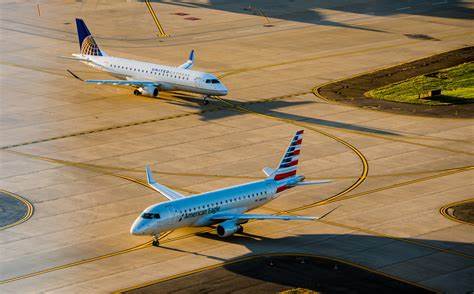Within the vast expanse of the United States, the aviation landscape is intricately woven by a network of regional airlines. These carriers, often operating under the radar of major airlines, serve as lifelines for countless communities, linking them to larger cities and essential transportation hubs. In this article, we delve into the pivotal role, challenges, benefits, and the impact of regional airlines in the dynamic aviation scene of the United States.
Contents
The Crucial Role of Regional Airlines
It in the US are the vital links that bridge the gap between smaller cities and major metropolitan areas. Their services are pivotal in maintaining connectivity and accessibility across the diverse geography of the country.
Enhancing Regional Connectivity
Regional airlines play a pivotal role in connecting underserved and remote areas to larger cities, ensuring that communities have access to essential air travel services.
Supporting Local Economies
These airlines are catalysts for local economic growth, as they stimulate tourism, attract businesses, and generate employment opportunities in both the aviation sector and related industries.
Essential Air Service (EAS) Program
The Essential Air Service program, a federal initiative, supports regional airlines by ensuring that communities maintain access to air travel, even in regions where larger carriers might not operate profitably.
Challenges Confronting Regional Airlines
Operational Costs
Operating shorter routes with smaller aircraft can lead to higher operational costs per seat mile, impacting the financial viability of regional airlines.
Sustainability of Routes
Ensuring the profitability and sustainability of routes with lower passenger demand can be challenging for regional carriers.
Pilot Shortages
It often face difficulties in recruiting and retaining qualified pilots, leading to potential disruptions in flight schedules.
Competition from Major Airlines
The competition from larger airlines that may choose to operate routes traditionally served by regional carriers can pose a threat to their market share.
Advantages of Regional Airlines
Community-Oriented Services
It often focus on providing personalized and customer-centric services, fostering a sense of community among travelers.
Accessibility to Smaller Airports
By connecting smaller regional airports to major hubs, these airlines enhance accessibility to a wider range of destinations for passengers.
Frequency of Flights
Shorter routes operated by it often allow for higher flight frequency, offering passengers more travel options throughout the day.
Partnerships with Major Carriers
Many regional airlines have partnerships with major carriers, enabling seamless travel connections and expanding their network reach.
Impact on the US Aviation Landscape
Network Expansion
It contribute significantly to the growth of the US air transportation network, ensuring that even smaller cities remain connected.
Local Economies
The presence of it drives economic activity in communities they serve by attracting business and tourism.
Vital Connectivity
It ensure that remote or underserved areas of the US remain connected to major cities and transportation networks.
Travel Diversity
By providing diverse travel options, it offer passengers flexibility and convenience in their travel plans.
It might operate behind the scenes, but their impact on US aviation is undeniable. Their role in fostering connectivity, driving local economies, and ensuring accessibility to various destinations is instrumental. Overcoming challenges through innovation, collaboration, and community engagement, it continue to shape the intricate tapestry of air travel in the United States, enriching the lives of both travelers and communities they serve.

